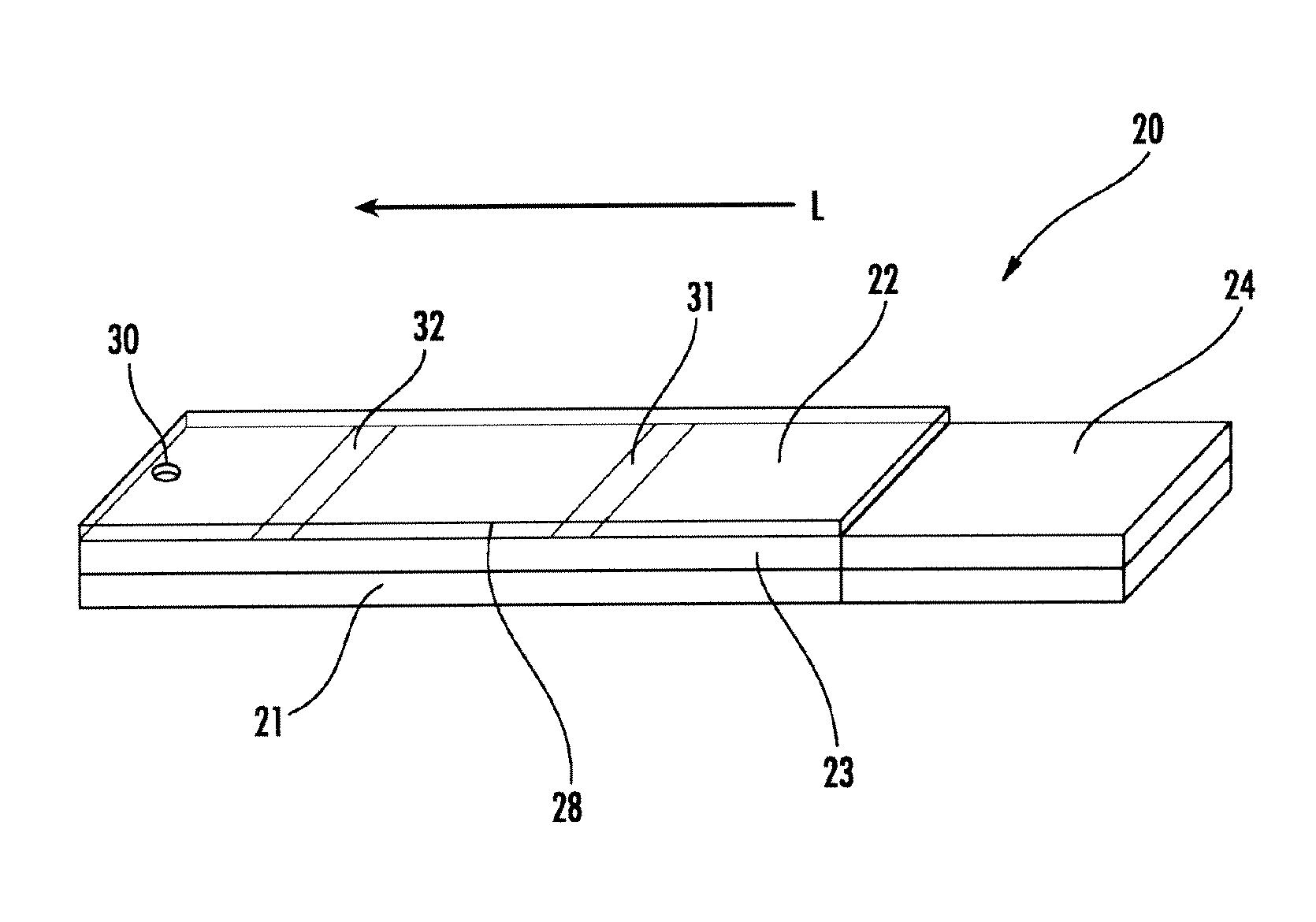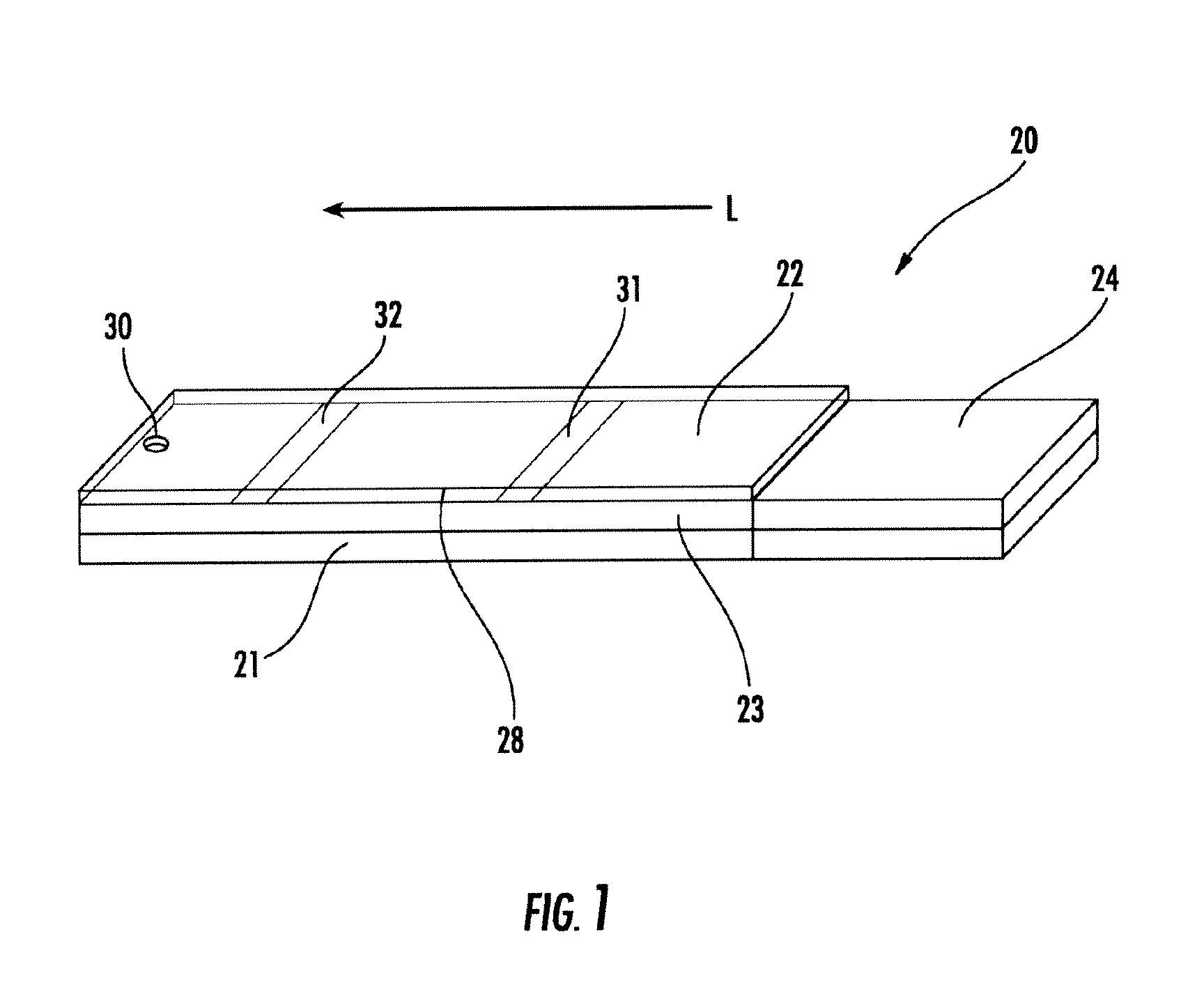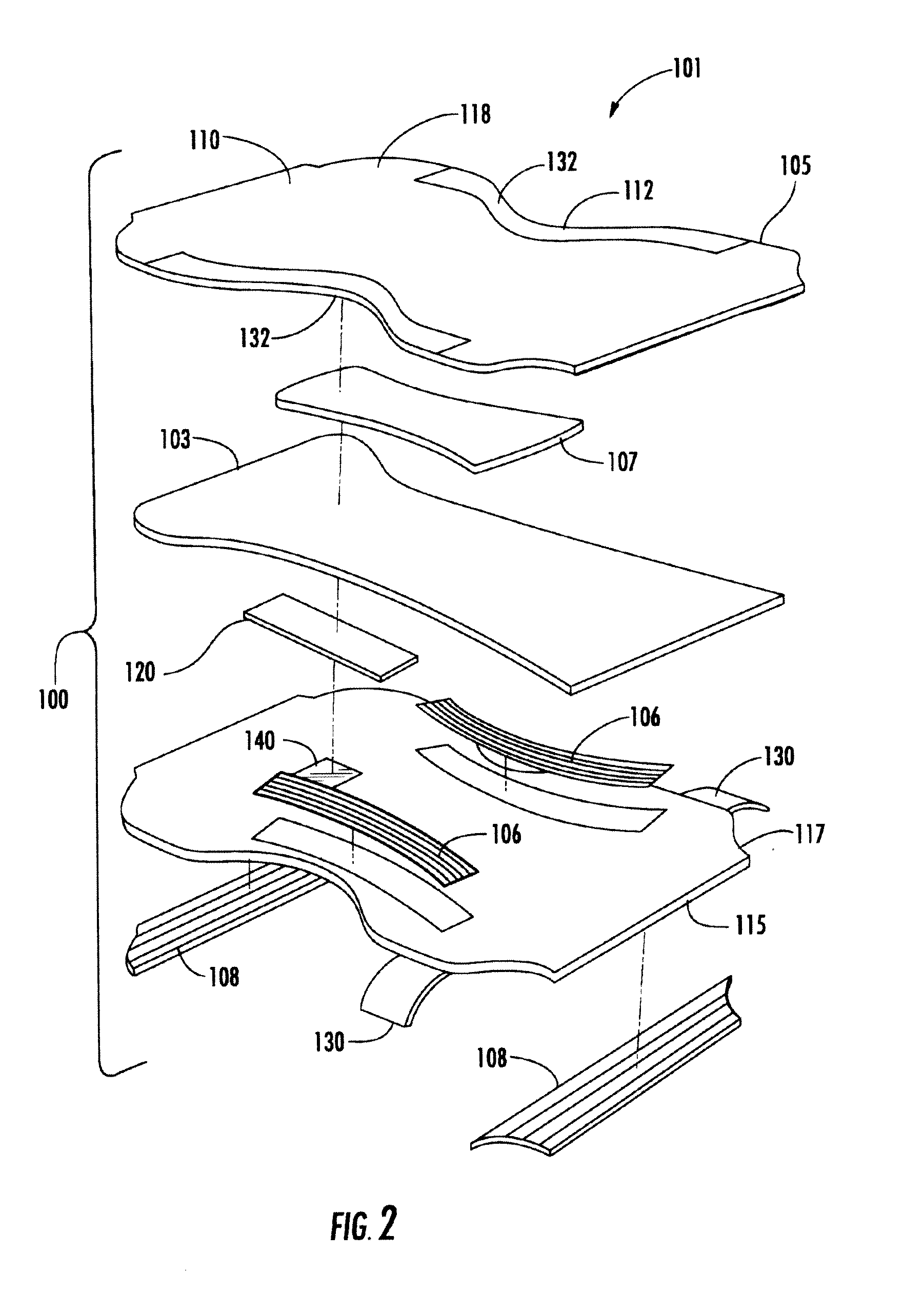Dehydration Sensors with Ion-Responsive and Charged Polymeric Surfactants
a polymer surfactant and dehydration sensor technology, applied in the direction of instruments, specific gravity measurement, analysis using chemical indicators, etc., can solve the problems of serious consequences for a dehydrated person, dehydration and hypohydration in fluids, and the inability to detect the dehydration or hypohydration of the fluid, so as to improve the wettability of the sensor, increase the salt concentration, and reduce the solubility
- Summary
- Abstract
- Description
- Claims
- Application Information
AI Technical Summary
Benefits of technology
Problems solved by technology
Method used
Image
Examples
example 1
[0096]A cellulose pad was soaked with 20 mg / ml polyacrylic acid (PAA) at a pH of 7.95 and air-dried. The pad was then soaked with a solution of 2.4% Oasis (surfactant) in 90% ethanol and 10% water and air-dried. The pad was then cut into small pieces (2 cm×4 cm) and to each piece a small drop of 5 mg / ml bromothymol blue in water was applied and allowed to dry. A drop of synthetic urine of different specific gravities was applied to a piece of dipstick to show green, yellowish green, greenish yellow, yellow, yellow and yellow for sample of specific gravities of 1.002, 1.008, 1.014, 1.020, 1.025 and 1.035, respectively.
example 2
[0097]A cellulose pad deposited with 20 mg / ml PAA at pH 8.2 was striped with a solution containing 2 ml of 200 mg / ml Oasis (surfactant) and 1 ml of 5 mg / ml bromothymol blue (BTB) and air dried. The pad was cut into 5 mm wide devices to show an initial color of blue. The devices were sealed by Scotch tape except a sample application location. A synthetic urine sample, with specific gravities of 1.002, 1.008, 1.014, 1.020, 1.025 and 1.035, was applied to each device to show green, green, yellow green, greenish yellow, yellow and yellow, respectively, as represented in FIG. 3.
example 3
[0098]A 30 cm long and 4 cm wide cellulose pad deposited with 20 mg / ml PAA at pH 8.2 was soaked with 10 ml solution of 4.8% Oasis (surfactant), 0.1% Tween 20 in water and ethanol (water / ethanol=2 / 8) and air-dried. The pad was then striped with 5 mg / ml BTB in water / ethanol (7 / 3) through Kinematic dispenser to make a narrow stripe for the detection zone. The pad was then cut into 5 mm wide devices. The devices were sealed by Scotch tape except a sample application location. A synthetic urine sample, with specific gravities of 1.002, 1.008, 1.014, 1.020, 1.025 and 1.035, was applied to each device to show blue, green, greenish yellow, yellow, yellow and yellow, respectively.
PUM
| Property | Measurement | Unit |
|---|---|---|
| pKa | aaaaa | aaaaa |
| length | aaaaa | aaaaa |
| length | aaaaa | aaaaa |
Abstract
Description
Claims
Application Information
 Login to View More
Login to View More - R&D
- Intellectual Property
- Life Sciences
- Materials
- Tech Scout
- Unparalleled Data Quality
- Higher Quality Content
- 60% Fewer Hallucinations
Browse by: Latest US Patents, China's latest patents, Technical Efficacy Thesaurus, Application Domain, Technology Topic, Popular Technical Reports.
© 2025 PatSnap. All rights reserved.Legal|Privacy policy|Modern Slavery Act Transparency Statement|Sitemap|About US| Contact US: help@patsnap.com



